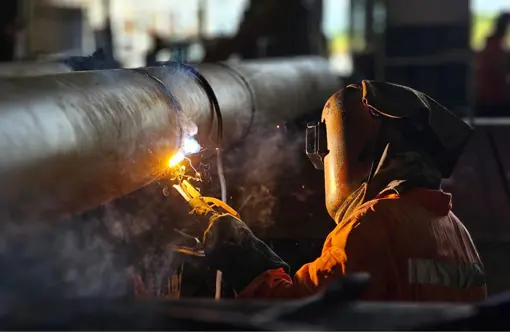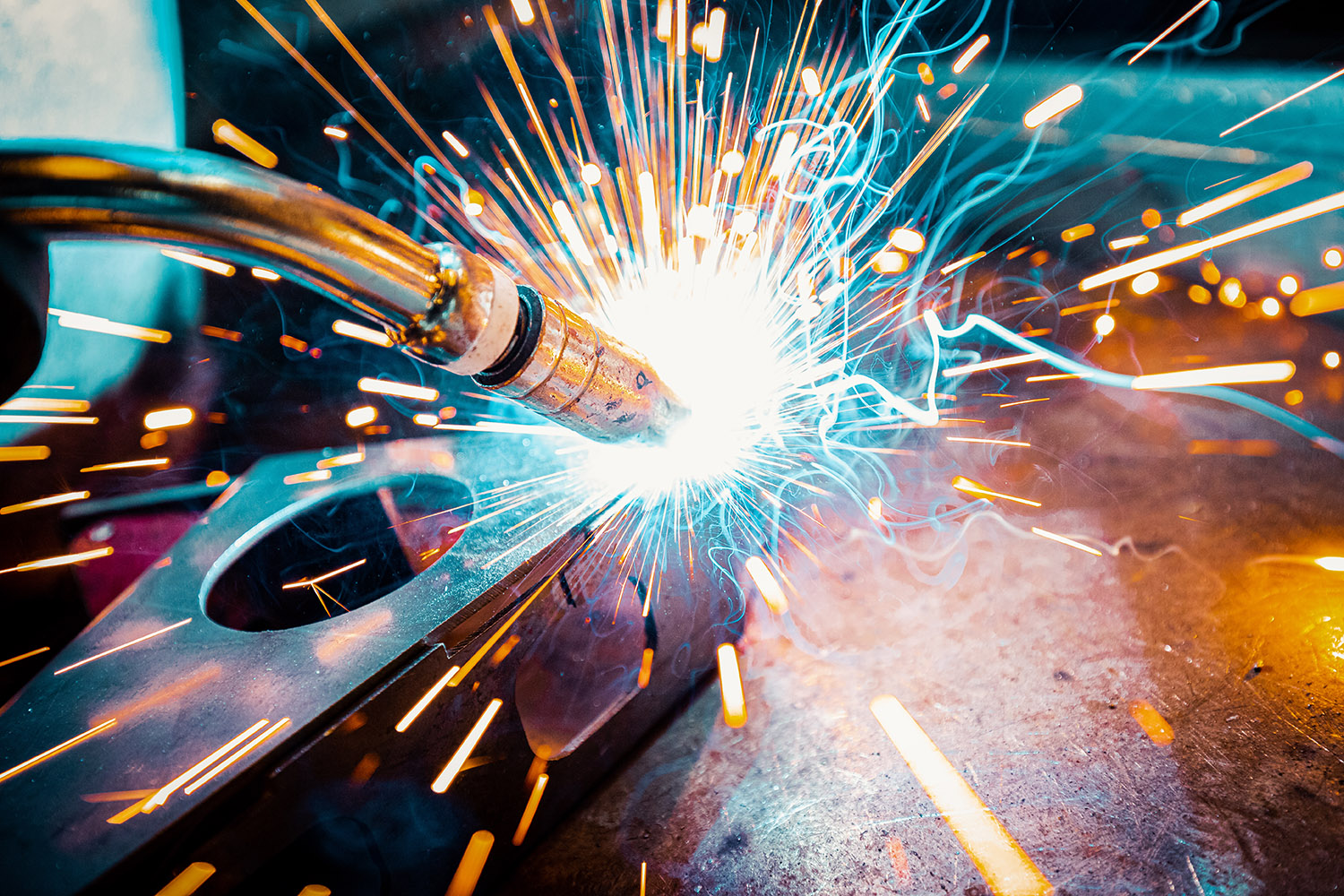Quick tips for poor fusion from Montana Mobile Welding and Repair
Wiki Article
Usual Welding Repair Service Issues and How to Address Them Efficiently
Welding repair services usually come across a range of problems that can endanger the integrity of the last product. Common problems include insufficient penetration, porosity, and misalignment, amongst others. Each defect provides distinct difficulties that require details methods for resolution. Recognizing these issues is vital for welders intending to boost their end results and abilities. This conversation will discover these usual welding fixing concerns and reliable approaches to resolve them.Poor Penetration
Poor infiltration occurs when the weld metal stops working to completely fuse with the base product, leading to weak joints and potential architectural failings. This problem often stems from inadequate warmth input, inaccurate electrode angle, or improper welding rate. Welders might run into poor infiltration due to a mistake of the required parameters for a particular material density or kind. Additionally, contamination on the base material's surface can impede effective bonding, intensifying the issue. To deal with insufficient infiltration, welders must assure suitable settings on their equipment and maintain a clean job surface. Normal assessment of welds is suggested to recognize any shortages early, permitting for prompt improvements and the avoidance of compromised structural stability in bonded assemblies.Porosity
Porosity is a common flaw in welded joints that shows up as tiny gas bubbles trapped within the weld metal. This problem can jeopardize the honesty of the weld, causing minimized stamina and potential failing under anxiety. Montana Mobile Welding and Repair Belgrade Fabrication. Porosity generally develops from contamination, dampness, or improper welding methods, which allow gases to escape right into the liquified weld swimming pool. To resolve porosity, welders need to ensure appropriate surface area preparation, preserve a clean functioning setting, and make use of ideal welding specifications. Furthermore, picking the best filler material and protecting gas can alleviate gas entrapment. Routine assessment and testing of welds can help recognize porosity early, assuring timely corrective activities are taken, consequently maintaining the top quality and reliability of the bonded structureImbalance
Imbalance in welding can emerge from various elements, consisting of improper configuration and thermal development. Recognizing the origin is necessary for efficient resolution. A number of modification strategies are readily available to realign elements and ensure structural honesty.Sources of Misalignment
Welding imbalance commonly originates from a range of underlying concerns that can jeopardize structural integrity. One key cause is inappropriate fit-up of components prior to welding, which can bring about voids and unequal surface areas. Variants in thermal growth during the welding procedure can likewise result in distortion, specifically if the products being joined have various coefficients of development. In addition, inadequate securing and fixturing might stop working to hold components firmly in location, causing motion throughout welding. Badly kept equipment, consisting of welding equipments and tools, may introduce variances in the weld grain, more contributing to imbalance. Driver error, stemming from insufficient training or experience, can also play a substantial duty in creating misaligned welds.Modification Techniques Readily Available
Dealing with misalignment properly calls for a combination of corrective strategies tailored to the details concerns handy. One usual technique is the usage of components or jigs to hold elements in the proper position during welding, making sure consistent alignment. Additionally, pre-heating the products can help in reducing distortion and enhance fit-up. For considerable misalignment, mechanical realignment methods, such as utilizing hydraulic jacks or clamps, can be utilized to deal with the placement prior to welding. Post-weld warmth therapy might additionally be essential to alleviate stress and anxieties triggered by misalignment. Careful inspection and modification throughout the arrangement phase can prevent imbalance concerns from becoming significant problems, advertising a smoother welding procedure and improving general structural stability.Distortion
Distortion is a common challenge in welding that can develop from different factors, including unequal heating and air conditioning. Understanding the causes of distortion is necessary for applying reliable avoidance methods. Addressing this concern not just boosts architectural stability yet likewise improves the general quality of the weld.Sources of Distortion
When based on the intense warm of welding, products usually undergo modifications that can lead to distortion. This sensation primarily occurs from thermal growth and tightening throughout the welding process. As the weld area warms up, the material increases; upon air conditioning, it gets, which can produce interior tensions. Furthermore, irregular heating throughout a work surface can exacerbate these tensions, resulting in bending or flexing. The kind of product additionally plays a considerable duty; steels with differing thermal conductivity and coefficients of expansion might respond in different ways, causing unpredictable distortions. Bad joint style and poor fixturing can contribute to imbalance during welding, enhancing the chance of distortion. Comprehending these causes is vital for effective welding repair service and prevention techniques.Avoidance Techniques
Effective avoidance strategies for distortion throughout welding emphasis on controlling heat input and making sure proper joint layout. Keeping a constant warmth input assists to minimize thermal expansion and contraction, which can result in distortion. Using techniques such as preheating the work surface can additionally minimize the temperature level slope, promoting uniform home heating. Additionally, picking proper joint styles, such as T-joints or lap joints, can enhance stability and minimize anxiety focus. Carrying out correct fixturing to secure the workpieces in position additionally help in keeping positioning during the welding process. Staggered welding sequences can disperse warm much more uniformly, preventing localized distortion. By using these techniques, welders can considerably reduce the chance of distortion and boost the total quality of their welds.Splitting
Fracturing is a common issue experienced in welding repairs, typically arising from various elements such as improper air conditioning prices, product selection, or insufficient joint preparation. The event of fractures can substantially jeopardize the stability of the weld, resulting in prospective failings throughout procedure. To resolve this concern, welders need to first assess the source, making certain that products are suitable and properly picked for the details application. Additionally, regulating the air conditioning price during the welding procedure is essential; fast air conditioning can induce stress and bring about cracking. Appropriate joint layout and preparation additionally add to minimizing the risk. Carrying out these methods can boost weld top quality and toughness, eventually minimizing the probability of breaking in completed weldments.
Incomplete Blend
A significant concern in welding repair services is incomplete combination, which happens when the weld metal does not appropriately bond with the base material or previous weld passes - Montana Mobile Welding and Repair Belgrade Welding. This issue can lead to weaknesses in the joint, potentially endangering the integrity of the welded structure. Factors adding to redirected here incomplete combination consist of insufficient heat input, improper welding strategy, and contamination of the surface areas being joined. To address this issue properly, welders need to ensure proper pre-weld cleansing and surface area preparation, in addition to readjust their welding parameters to attain sufficient infiltration and combination. Regular evaluation during the welding procedure can also aid recognize incomplete fusion early, permitting prompt corrective steps to boost the overall quality of the weldOverheating
While welding repair work can boost structural integrity, overheating provides a substantial difficulty that can bring about material deterioration. Too much warm during welding can alter the mechanical residential properties of metals, causing decreased toughness, enhanced brittleness, and warping. This phenomenon is particularly essential in high-stress applications where architectural dependability is extremely important. Recognizing overheating can entail visual assessments for staining or distortion, as well as keeping an eye on temperature level throughout the welding procedure. To minimize the dangers connected with getting too hot, welders should use suitable methods, such as managing heat input, changing travel rate, and using ideal filler materials. In addition, carrying out pre- and post-weld heat therapies can help recover product buildings and enhance the general quality of the repair, ensuring long-lasting performance and safety.Often Asked Questions
What Are the Typical Indications of a Welding Problem?

How Can I Examine My Welds for Top quality?
To test welds for high quality, one can make use of aesthetic evaluations, ultrasonic testing, and radiographic techniques. Each technique guarantees architectural honesty, determines defects, and confirms adherence to defined requirements, ultimately enhancing the integrity of the bonded joints.What Safety and security Safety Measures Should I Take While Welding?
When welding, one ought to prioritize safety by using ideal individual protective devices, guaranteeing proper air flow, safeguarding combustible materials away, preserving a tidy work area, and understanding environments to avoid mishaps and injuries.Can I Fix a Weld Without Redoing the Entire Joint?
Repairing a weld without article remodeling the entire joint is possible, depending upon the damages (Fabrication). Strategies such as grinding, adding filler material, or using a welding process can properly address particular flaws while maintaining the bordering frameworkWhat Devices Are Vital for Effective Welding Fixes?
Essential devices for reliable welding repair work include a welding maker, wire brush, mill, protective equipment, clamps, and filler materials. Each tool plays a crucial function in making sure top quality and safety during the repair procedure. Porosity generally occurs from contamination, dampness, or improper welding techniques, which enable gases to leave right into the liquified weld pool. Improperly kept devices, including welding devices and tools, may present incongruities in the weld bead, further adding to misalignment. When subjected to the extreme warmth of welding, products frequently undertake adjustments that can lead to distortion. Cracking is an usual concern experienced in welding fixings, often resulting from numerous aspects such as improper cooling prices, product selection, or poor joint prep work. A significant issue in why not try here welding fixings is insufficient combination, which occurs when the weld steel does not appropriately bond with the base product or previous weld passes.Report this wiki page